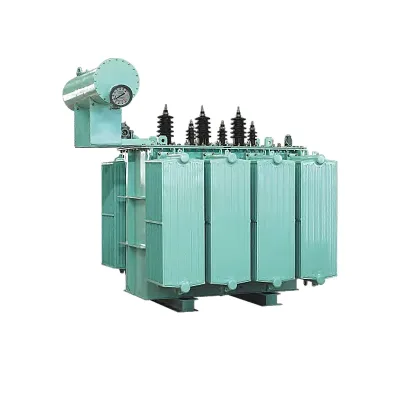Technical Deep Dive: How SF₆-Free Switchgear Works and Why It Matters

I. The Science Behind SF₆ and Its Alternatives
-
Insulation: Preventing electrical breakdown between conductors and ground. -
Arc Interruption: Safely extinguishing arcs during circuit breaker operations.
1. Solid Insulation (Epoxy Resin-Based Designs)
-
Nano-composite additives: Silica or alumina nanoparticles enhance dielectric strength and thermal stability. -
3D Electric Field Simulation: Finite element analysis (FEA) optimizes component geometry (e.g., rounded edges, graded insulation thickness) to prevent local field concentrations. -
Modular Assembly: Pre-molded solid insulation components snap together, reducing assembly errors and ensuring consistent insulation gaps.
2. Vacuum Interruption + Air/Solid Insulation
-
Arc Quenching: When the circuit breaker opens, the contacts separate in the vacuum chamber. The lack of gas molecules means the arc cannot sustain itself, extinguishing almost instantly. -
Insulation: For MV applications (12kV–40.5kV), air suffices as the insulating medium. For higher compactness, solid insulation (e.g., epoxy-coated busbars) is added.
-
Proven Reliability: Vacuum interrupters have been used for decades in MV applications with >99.9% success rates. -
No Gas Dependency: Eliminates SF₆ entirely or reduces it to trace amounts (in hybrid designs).
3. SF₆ Alternatives (Transitional Solutions)
-
Gas Mixtures: g³ combines fluoronitrile (a low-GWP compound) with CO₂ or N₂ to dilute its reactivity. -
Backward Compatibility: Designed to fit existing GIS enclosures, easing retrofitting.
II. Design Challenges and Engineering Solutions
1. Electric Field Management
-
Rounded Corners: Sharp edges concentrate electric fields; SIS designs use large-radius busbars and smooth transitions. -
Shielding Layers: Internal copper or aluminum foils redistribute charges, evening out the field. -
Stress Cones: In cable terminations, tapered insulation guides electric fields away from weak points.
2. Compactness vs. Insulation Trade-offs
-
Hybrid Designs: Combining vacuum interruption (for arc quenching) with solid insulation (for compactness). -
Multi-layer Insulation: Stacking thin layers of epoxy resin with embedded shielding to maximize dielectric strength per unit volume.
3. Monitoring and Maintenance
-
Embedded Sensors: Partial discharge (PD) sensors (UHF or acoustic) monitor for early signs of insulation degradation. -
Thermal Imaging: Infrared cameras detect hot spots in vacuum interrupters or solid components. -
Predictive Analytics: AI algorithms analyze sensor data to forecast maintenance needs.
III. Practical Benefits for Utilities and Industries
1. Environmental Compliance
2. Operational Cost Savings
-
No Gas Handling: Eliminates the need for SF₆ refills, leak checks, and adsorbent replacements. -
Longer Lifespan: Solid insulation and vacuum components last >30 years with minimal maintenance.
3. Safety and Reliability
-
No Toxicity Risks: SF₆ is non-toxic but can produce toxic byproducts (e.g., HF, SO₂) during arcing. SF₆-free designs avoid these hazards. -
Resilience to Harsh Conditions: Solid insulation is immune to humidity, salt fog, and altitude effects (unlike air-insulated GIS).
IV. Case Studies and Global Adoption
-
Europe: Cities like Copenhagen and Vienna have mandated SF₆-free GIS for all new substations. ABB’s SafeRing AirPlus (using g³) and Siemens’ NXPLUS C-SIS are widely deployed. -
Asia: China’s State Grid has piloted solid-insulated switchgear in Shanghai’s urban grid, reducing substation footprints by 40%. -
North America: Utilities like PG&E are testing vacuum-based MV switchgear for solar farm connections.
Conclusion
Site içinde arama yapın
Kategoriler
- Art
- Causes
- Crafts
- Dance
- Drinks
- Film
- Fitness
- Food
- Oyunlar
- Gardening
- Health
- Home
- Literature
- Music
- Networking
- Other
- Party
- Religion
- Shopping
- Sports
- Theater
- Wellness
Read More
relx 主機選購、煙彈口味與官網新品 relx alpha 全解析
近年來,relx電子菸在台灣市場受到越來越多使用者青睞,不論是剛接觸電子菸的新手,或是習慣霧化產品的老手,都能在 relx 系列找到適合自己的產品。
從 relx 主機、relx...
Haiou Electric Dough Mixers Simplify the Art of Baking
Every great baked product begins with well-prepared dough. Whether it's bread, pizza, noodles, or...
"5 Must-Have Feng Shui Jewelry Pieces for Positive Energy in 2024"
Discover the top Feng Shui jewelry pieces to attract luck, wealth, and protection this year....
Durability and Design: Full Port Brass Ball Valves
Ball valves are one of the most commonly used types of valves in the world today. They are...
Poly-Vents Market is expected to reach USD 1.61 billion by 2032
"Executive Summary Poly-Vents Market: Share, Size & Strategic Insights
CAGR Value
The...



